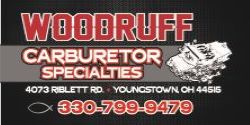Garys1969RR
Well-Known Member
Was trying to figure out how intake port airflow limits engine RPM. In say a 500 C/I engine, the intake port airflow averages 215 CFM, throughout its lift range. A 500 inch engine is 3.45 cubic feet (approx). That is, 1728 cubic inches equals 1 cubic foot. Dividing 3.45 cubic feet by 8 equals .43 cubic feet per cylinder. .43 times 5000 RPM would mean the intake port would need to flow an average of 215 CFM. A Stealth head flowing 290 CFM at .500" lift, would be doing well to flow an average of 215 CFM from .050 to .500" lift. So the only way to increase the RPM at which the engine develops max power, would be to increase airflow, duration, max valve lift, or all of the above. Am I doing the math on this correctly? My question is: what cam would be required in a 451 to make max horsepower at 6000 RPM? Using Eddy Performer RPM heads flowing 290 CFM at .500" lift? Or is there even a way to answer that. Just trying to learn about relationship of airflow vs power at RPM. Thanks.
- - - Updated - - -
Oops, is 500 cubic inches .345 cubic feet? I don't have my calculator here. Some one please shed some light on how to figure this out.
- - - Updated - - -
Might be easier to just call Comp cams, give them the details and have the computer make a suggestion. Lol
- - - Updated - - -
Oops, is 500 cubic inches .345 cubic feet? I don't have my calculator here. Some one please shed some light on how to figure this out.
- - - Updated - - -
Might be easier to just call Comp cams, give them the details and have the computer make a suggestion. Lol
















